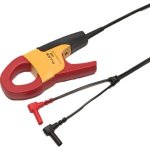winnie
Senior Member
- Location
- Springfield, MA, USA
- Occupation
- Electric motor research
There are two possible sources of the current flowing in the lake: neutral current from the high voltage distribution system supplying power to the distribution transformers, or a fault to earth on the low voltage (120/240V) usage side of the power distribution system.
We are quick to jump to the conclusion that the problem is the high voltage neutral, because as normally designed these systems always inject a little bit of current into the soil.
However faults from the low voltage side of things to soil can also inject current into the ground and water. This current will be finding its way back to the neutral of the distribution transformer via all of the various grounding electrodes.
A specific risk for this is well pump wiring. An underground well casing is an excellent grounding electrode. If the well casing is not properly bonded back to the service, and the well wiring faults to the case, then the well can inject quite a bit of current into the soil.
Another known risk are pumps in lakes used as water sources. If there isn't proper bonding, and there is a fault, then the pump can inject current into the surrounding water. There was a thread recently about drowning risks from these pumps.
-Jonathan
We are quick to jump to the conclusion that the problem is the high voltage neutral, because as normally designed these systems always inject a little bit of current into the soil.
However faults from the low voltage side of things to soil can also inject current into the ground and water. This current will be finding its way back to the neutral of the distribution transformer via all of the various grounding electrodes.
A specific risk for this is well pump wiring. An underground well casing is an excellent grounding electrode. If the well casing is not properly bonded back to the service, and the well wiring faults to the case, then the well can inject quite a bit of current into the soil.
Another known risk are pumps in lakes used as water sources. If there isn't proper bonding, and there is a fault, then the pump can inject current into the surrounding water. There was a thread recently about drowning risks from these pumps.
-Jonathan

